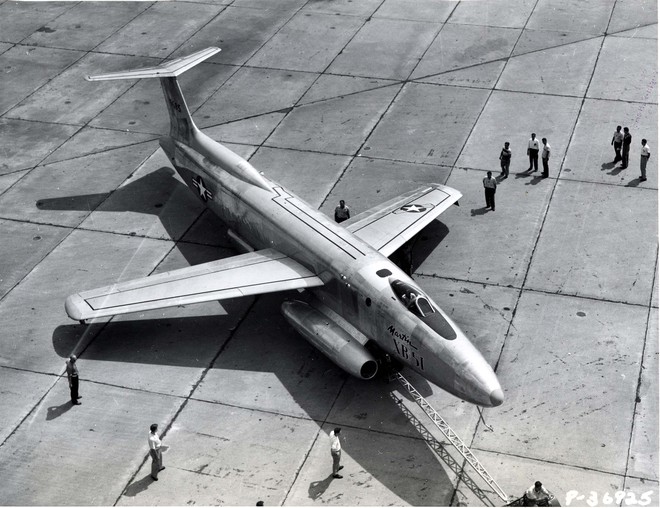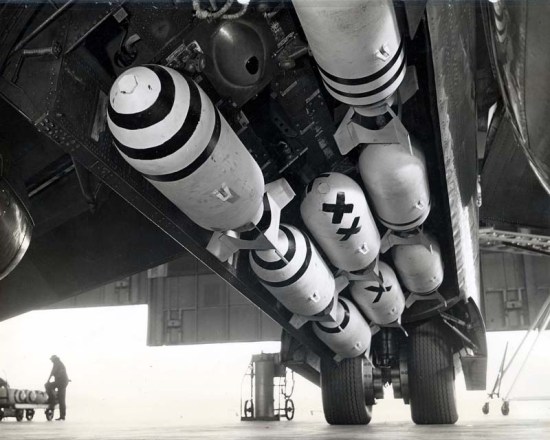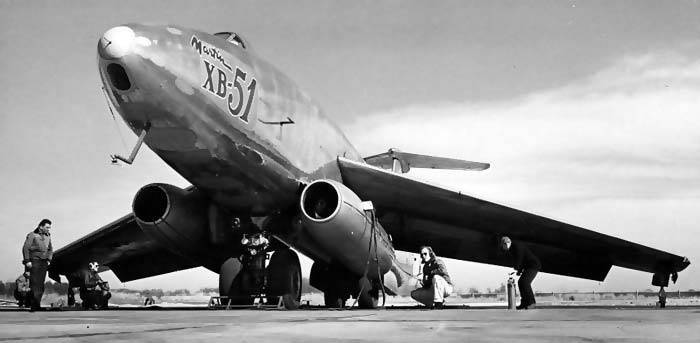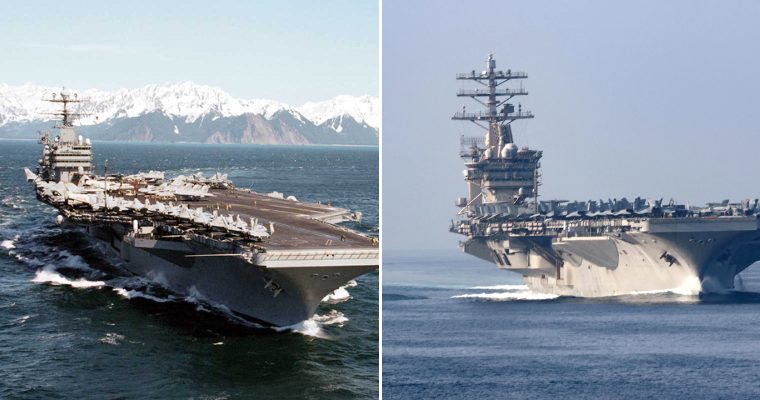Long before the dawn of modern aircraft like the F-35s, F-22 Raptors, the Nighthawk, and even the Blackbird, the United States experienced a new era of defense innovation with the development of an unconventional aircraft which was considered far ahead of its time.

Sporting an unorthodox design, the XB-51 aircraft was manufactured by the Glenn L. Martin Company, now Lockheed Martin.
However, despite the experimental aircraft bringing a lot of promise due to its long list of features and physical features unlike any other aircraft, it failed to hold its place in the US Air Force’s ranks and disappeared into the history books.
The birth of the aircraft came after the US declared a need to build a massive bomber which would help them deter or win an atomic war at a time when tensions were increasing with the Soviet Union and its allies.
Defense analyst, Robert Dorr, while writing for the Defence Media Network, said – “The XB-51 was officially a “light” bomber – albeit a beefy and very heavy light bomber – but it might have had a role in the growing strategic standoff between superpowers.”
Designed in the 1945s, XB-51 was an American trijet ground-attack aircraft, which was originally meant to be a bomber for the US defense forces under specification V-8237-1. The aircraft which took its maiden flight in 1949 had already been designation as XA-45, with the “A” ground-attack classification being eliminated and replaced by the XB-51 designation.
The aircraft despite being fast, maneuverable, and an absolute delight to fly lost out in evaluation to the English Electric Canberra which – built by Martin – entered service as the Martin B-57 Canberra.

According to defense and features writer, Tom Demerly, writing for The Aviationist – “The XB-51 was not designed specifically for a fly-off competition between attack aircraft, but it found itself in that position in 1950 when the USAF issued a requirement for attack aircraft during the Korean war. Both speeds of acquisition and cost-effectiveness were considerations in the program,”
While the XB-51 exhibited a long list of innovative and forward-thinking technologies that would manifest over the next few decades, it wasn’t right for the Air Force’s acquisition and implementation timing, so it was passed over for the off-the-shelf expediency and convenience of the (then) English Electric B-57 Canberra, built for the USAF under license by Martin Aviation.”
Despite the snub, the Martin XB-51 was arguably one of the most advanced attack bombers on the face of the planet in that period of time and boasted of three General Electric J47 engines, with two carried in pods near its nose and the third engine placed under its tail.
The aircraft also had thin adjustable-incidence wings, enabling the pilot to have the power to vary the wing’s angle of incidence in the air to make takeoffs and landings easier. The presence of spoilers on each wing instead of conventional ailerons also aided in safer landings by allowing the planes the use of full-span flaps.

Bill Watson, an aviation enthusiast based in Houston, Texas, said – “The Model 234 design featured variable-incidence wings swept at 35 degrees and a pronounced 6 degree anhedral. Full-span leading edge slats and trailing edge slotted flaps increased lift resulting in shorter takeoffs.”
Not only that, the variable incidence wing also enabled the aircraft to have a long fuselage, which carried two bomb bays, all fuel tanks, and the bicycle-style landing gear.
“The XB-51 incorporated a rotary weapons bay that enabled it to deliver bombs while flying at high speed. Capable of 645 mph at sea level in level flight, the XB-51 would have been able to run away from most fighters of its era,” said Dorr.

The aircraft, which had an estimated top speed of 645 mph, consisted of a T-tail, a rotary bomb bay along with the pilot’s cockpit being covered in a tiny bubble canopy, with both the pilot and the navigator/bombardier having ejection seats.
“The bomber had a crew of two. The pilot sat beneath a fighter-style “bubble” canopy. The second crewmember, a navigator/radio operator, sat below and behind the pilot and had only a small observation window on the starboard side of the aircraft. Both men sat in pressurized, air-conditioned comfort, equipped with upward ejection seats,” said Dorr.
As per information, everyone ranging from the pilots to the maintenance people loved the aircraft, with designers seeing so much versatility in it that there were suggestions of making a seaplane version of it.
It may have been the best bomber which never had the chance to fight a battle, despite its fast speed and overall effectiveness.
Dorr says – “For political reasons, not because of any aeronautical flaw, the U.S. Air Force ended up not with the B-51 but with an entirely different aircraft built at the same factory. Experts believe today that failure to put the B-51 into series production was a big mistake.”
Source:








